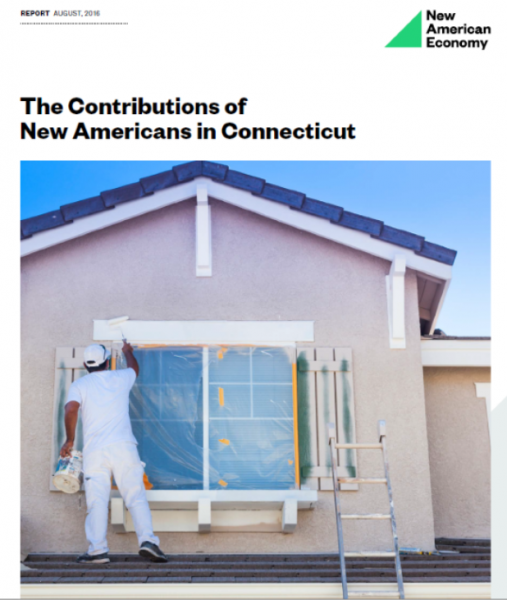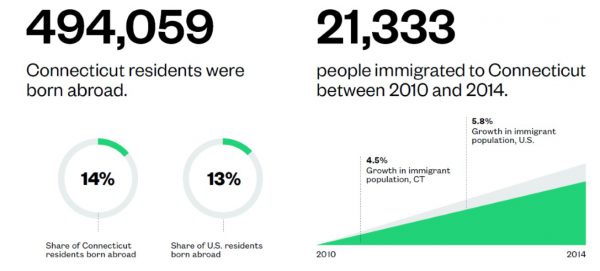Putting entrepreneurial, start-up and small businesses in the same place at the same time with business decision makers seeking suppliers, subcontractors and project partners is the concept that drives the CT Business Matchmaker, among Connecticut's largest events designed to bring together small, established businesses with “primes”—large and medium-sized companies, government agencies, educational institutions, and municipalities who are actively interested in increasing and diversifying their supplier lists.
“The Matchmaker program is a premier event offering significant new opportunities for Connecticut-based small businesses,” said Fred Wergeles, director of the University of Hartford’s Entrepreneurial Center, which manages and hosts the event. “Bringing together large companies and agencies with small businesses in the fast-paced Matchmaker environment creates the spark for emerging relationships that will fuel the state’s economy. The Entrepreneurial Center provides pre-event training for both the large and small businesses to maximize the value of their participation in the program.”

The eighth annual event will be held on June 1, 7:00 AM to 2:30 PM on the university campus. CT Business Matchmaker 2017 will offer an opportunity for small business owners to expand their contracting relationships. During the event, small businesses will present their products and services to potential customers in a series of ten- minute, one-on-one interviews with Primes. All Prime participants, including state and federal agencies, large corporations, municipalities, and educational institutions, come to the event with business needs they are seeking to fill.
“At Viking Construction, we are always looking for qualified subcontractors. We need to find the right company for the job in order to create a successful project, so relationships are very important to us. We know we’ll meet the quality we are seeking at CT Business Matchmaker,” said Michele Yeager, project administrator at Viking Construction.
“Through the CT Business Matchmaker, we accomplished our goal of reaching out to new subcontractors and providing economic opportunities to local businesses. They help get the small businesses ready for the opportunities we put out to bid,” said Michael Jefferson at the Metropolitan District (MDC). “I like to network with those agencies as well so I know what resources are available to support the success of our vendors. The MDC is committed to this process that helps build opportunities for small businesses.”
Wergeles also emphasized his organization’s effort to reach out to businesses run by women and minorities. “Through our Women’s Business Center, we also focus on recruiting women-owned and minority-owned businesses. These businesses traditionally receive fewer contracts, so we strive to provide more opportunities for them through this event.”
Additional organizing partners for CT Business Matchmaker include the University of Hartford’s Construction Institute, U.S. Small Business Administration, state Department of Administrative Services, CT Procurement Technical Assistance Program, state Commission on Human Rights and Opportunities, and the U.S. General Services Administration.
Participants include: Boston Scientific, Canberra Industries, Cianbro Corporation, City of Hartford, City of New Britain, Charter Oak Environmental Services, Inc., Colt's Manufacturing Company LLC, CT Airport Authority, Connecticut Lottery Corporation, CSCU, Dimeo Construction Company, Elbit Systems of America, Kollsman Inc., Enfield Enterprises Inc., Enterprise Builders, Inc., General Dynamics Electric Boat, Great Lakes Dredge & Dock Company, LLC, Greater Hartford Transit District, Harvard Pilgrim, Kaman Composite Structures, Manafort Brothers Incorporated, Methuen Construction Co., Inc., Pioneer Valley Transit Authority, Pitney Bowes, Sikorsky a Lockheed Martin Company, Skanska USA, Staples Business Advantage, Supervisor of Ship Building, The Hartford, The Metropolitan District, The Whiting-Turner Contracting Company, Triumph Integrated Systems, UCONN Health, UCONN Purchasing Dept., UConn Supplier Diversity Program, United States Navy, US Environmental Protection Agency, US General Services Administration – FAS, US General Services Administration – PBS, United Technology Aerospace Systems, Viking Construction, and Western CT State University.
 ted Nations and vetted by the State Department in a process that takes at least 18 months. By comparison, a million or so legal immigrants arrive annually. From October 2001 through 2016, Burma, Iraq, Somalia, Bhutan, and Iran are the top five nations that send refugees to the U.S.
ted Nations and vetted by the State Department in a process that takes at least 18 months. By comparison, a million or so legal immigrants arrive annually. From October 2001 through 2016, Burma, Iraq, Somalia, Bhutan, and Iran are the top five nations that send refugees to the U.S.
 There were nine states that had less than 500 refugees from a single country since October 2001: Alabama, Alaska, Arkansas, Delaware, Hawaii, Mississippi, Montana West Virginia and Wyoming.
There were nine states that had less than 500 refugees from a single country since October 2001: Alabama, Alaska, Arkansas, Delaware, Hawaii, Mississippi, Montana West Virginia and Wyoming.




 The
The 

 International migration has helped, the data shows, but not enough to offset domestic out-migration. Average international in-migration has grown 29% post-recession compared to pre-recession, but in terms of overall net migration, the state has seen an increased loss starting from 2012.
International migration has helped, the data shows, but not enough to offset domestic out-migration. Average international in-migration has grown 29% post-recession compared to pre-recession, but in terms of overall net migration, the state has seen an increased loss starting from 2012.






 Only about 42 percent of motorcyclists in Connecticut wear helmets, according to Neil Chaudhary, PhD, leader of a Trumbull team of premier investigators on behavioral traffic safety-related issues at Preusser Research Group, Inc. In states where helmets are required, there is near 100 percent compliance, he recently told the Newtown Bee, adding professional driver training, offered throughout the state, can help riders to develop stronger defensive driving skills.
Only about 42 percent of motorcyclists in Connecticut wear helmets, according to Neil Chaudhary, PhD, leader of a Trumbull team of premier investigators on behavioral traffic safety-related issues at Preusser Research Group, Inc. In states where helmets are required, there is near 100 percent compliance, he recently told the Newtown Bee, adding professional driver training, offered throughout the state, can help riders to develop stronger defensive driving skills.

































